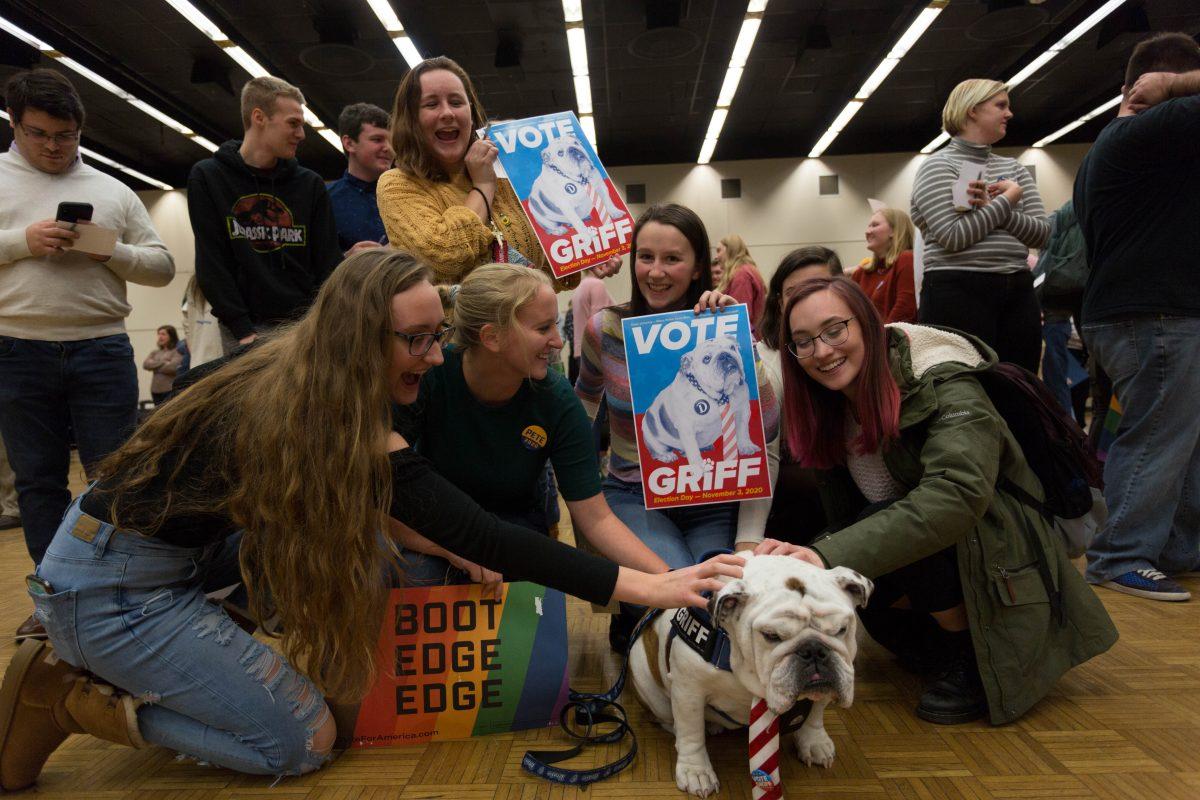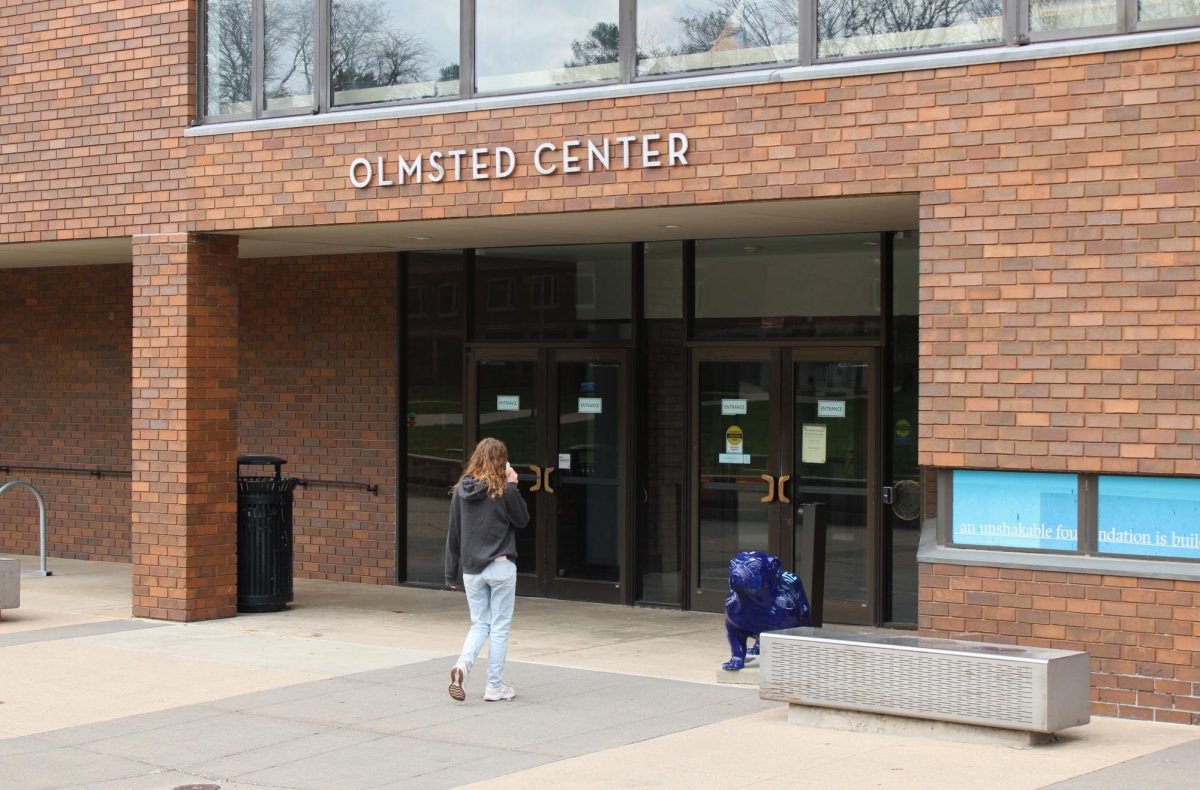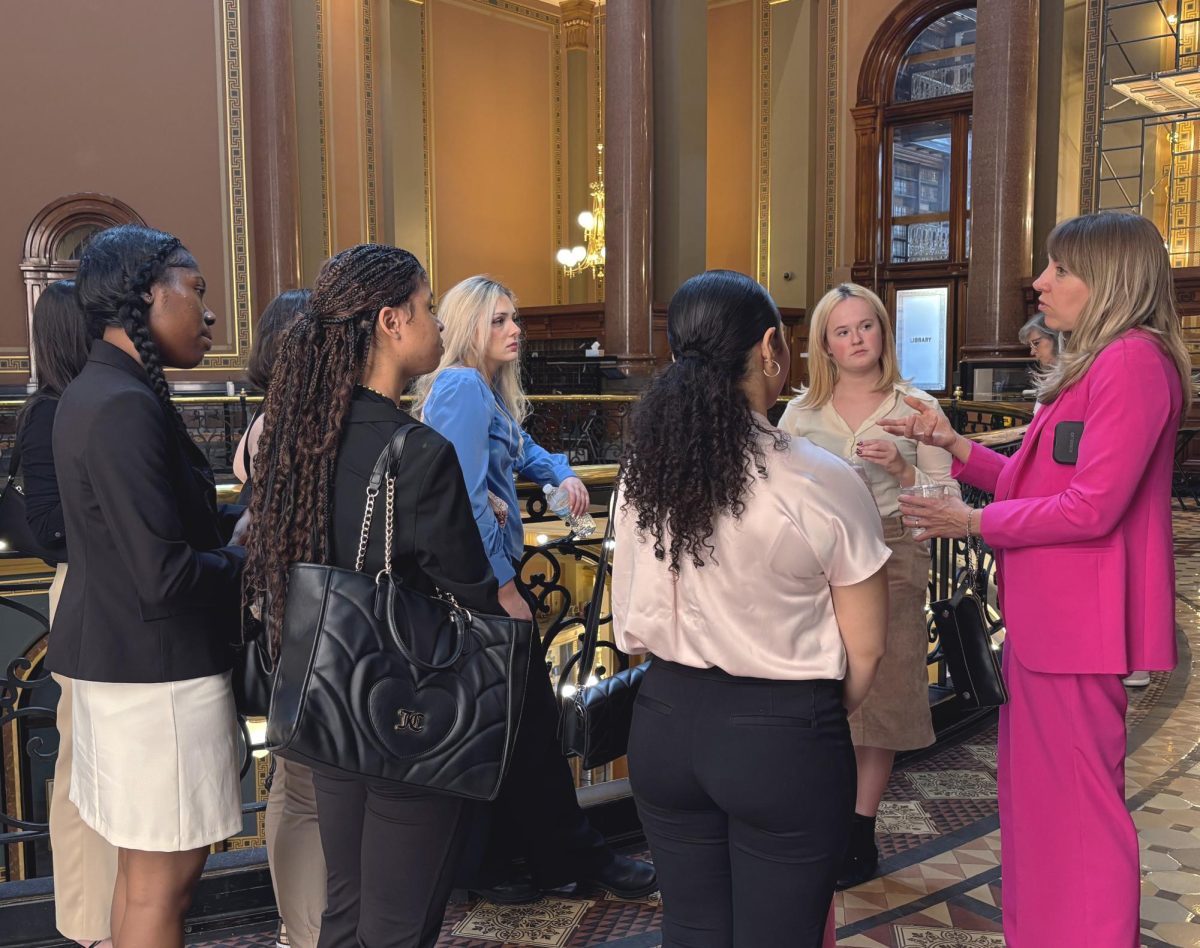by CAMERON BOLTON
Drake University held a mock caucus in Olmsted Center on Jan. 27. The purpose of the event was to educate students on how the caucus process works before the actual caucus happens.
The mock caucus was brought to the campus by the Iowa Caucus Project, partnering with Student Senate, Drake Democrats, and College Republicans.
The mock Republican caucus was scheduled to start at 6 pm, while the Democratic caucus was to begin at 7 pm. Neither event started on time.
“More than anything else, we recognized that the rules of procedures of caucus can be confusing to people who have never done it before,” said Rachel Paine Caufield, professor of political science and director of the Iowa Caucus project. “And so there are always some college students who are a little hesitant to participate because they don’t know what to expect. So the mock caucus is a way to give people an opportunity to learn about the rules and get a better idea of what they can expect when they walk into their caucus location.”
The Republican caucus was called to order by John Altendorf, who had been appointed by the Iowa Caucus Project to be the temporary chair.
Attendees did the pledge of allegiance before nominating the chair secretary for the presidential voting.
Altendorf then explained that they had gathered to do a straw poll to elect two precinct people to the county central committee to elect delegates, alternates, and junior delegates to the county commission convention, and to discuss and submit platform issues for the county convention.
Altendorf explained that at that time, what would happen in the country precinct caucus is that a Lincoln bag would be passed around for donations.
Then it was time to elect a permanent caucus chair. Altendorf was nominated by himself and was elected due to there being no other nominations.
Next, the precinct secretary was elected, and sophomore Tanner Halleran was voted on due to once again having no other nominations. Halleran’s function was to take a record of the event.
The surrogates for Republican candidates then gave a 3 to 5 minute speech to convince attendees about why they should support their candidate.
The candidates were Donald Trump, Bill Weld and Joe Walsh; only Trump and Walsh had surrogates. They went in the alphabetical order of the candidates’ last name.
Once the surrogates were done speaking, the caucus goers then voted. Trump came in first, Weld second, and Walsh third.
“Because the Republicans have an incumbent, it’s really not as big of a deal, that is why we’re not hearing about Republican candidates like we’re hearing about Democratic ones,” Halleran said. “But they are still promoting it.”
The events of Democratic caucus play out a little differently than the Republican caucus. As Halleran announced to the crowd, in a traditional caucus, they would elect the chair first, but for the nature of the event, he will serve as the chair for the Democratic caucus. The support secretaries joined him. For a normal caucus, there would only be one secretary, but since they had a lot of people there, they were going to need some extra help counting.
Halleran explained that the purpose of the caucus is to elect delegates, alternates, and people to committees at the county level. Then was the point where they would elect the officers serving.
Iowa Democratic Party Chairman Troy Price attended the mock caucus that night to address the audience. After Price handed the microphone back to Halleran, the latter then gave the social media information for Iowa democrats. The precinct captains for any candidate still in the race were then given three minutes to give a speech about why their candidate should be elected.
The precinct captain for Tom Steyer was his daughter Evelyn Steyer.
“I think that having mock caucus is a very good idea, and I particularly think that preparing young people to feel empowered at the caucus is great,” Steyer said in an interview before the event.
When the speeches ended, the attendees broke out into separate groups for each candidate. After the number of people in each group was tallied, the candidates were then further narrowed down to just Warren and Buttigieg groups, and Warren ended up winning.
Halleran said there would be several more events that would happen on caucus night that wasn’t done for the mock caucus.
“I think [the caucus is] incredibly important,” said Caufield. “There is something that is unique and special about a caucus process, about coming together with your neighbors, your friends, your family members…and having a process by which you engage each other, you persuade each other, you actively talk about issues and candidates and the things that you care about, what your priorities are, and I think that kind of interaction is really valuable.”
Caufield hoped that the mock caucus helped students get accustomed to the process and prepared, going into their caucus location comes Monday night, Feb. 3.







